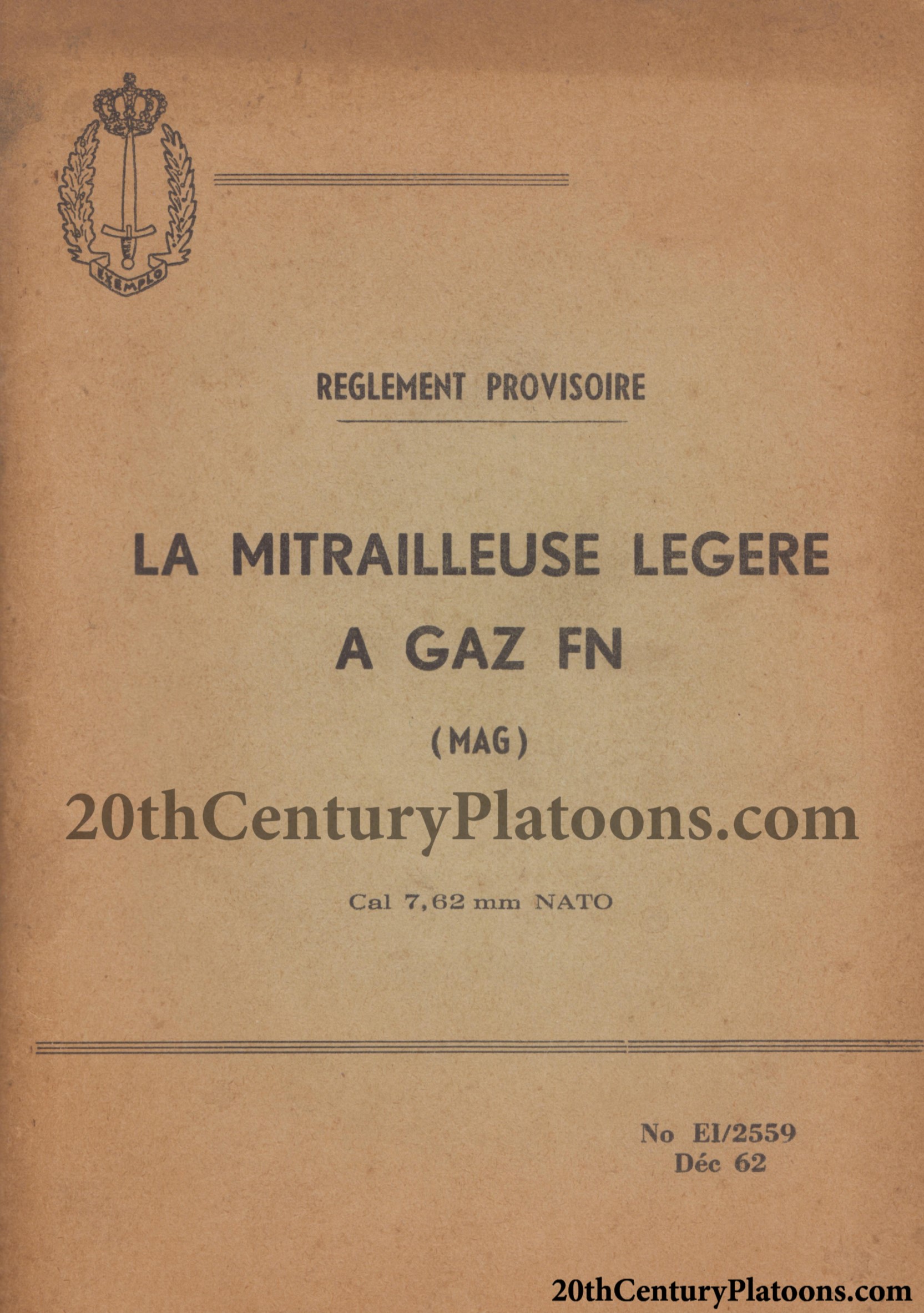The Belgian FN MAG, 1962

×
![]()
The standard for Western GPMGs, the FN MAG is used by over eighty nations, amongst which of course its home country, Belgium.
Initially developed to accept both FAL magazines and belted ammunition (American M13 or West-German DM1 type), the weapon modified and combined the barrel and bolt mechanism of the FN Model D (a variant of the M1918 BAR) with the trigger and feed mechanism of the MG42.
With the dual-feed capability dropped, the weapon was eventually offered to the Swedish and British militaries in 1957, with both adopting the weapon in 1958 and 1961 respectively.
It would strongly appear the Belgians did not adopt the weapon until 1962, given the provisional nature of our document in question. The FN MAG would initially be a weapon exclusive to the Para Commandos, the airborne light infantry component of the Belgian Army, with one weapon scaled per platoon, fifteen per company, and 45 per battalion.
It would be with the Paras where the FN MAG would fire perhaps its first shots in anger, during Operatie Rode Draak/Operation Dragon Rouge. The weapon was used in its infantry and tripod version, the latter from Jeeps.
As late as 1974, the weapon was entirely absent from the mechanised infantry battalions mounted on the AMX APC, the battalion being equipped with a mix of 68 FN FALOs, 32 FN .30-cals, 55 American .30-cals, nine Browning .50-cals, and four M45 quadmounts instead.
Somewhat later in 1981, the FN MAG had finally been introduced to line units, with a mechanised infantry platoon possessing two rifle squads equipped with one FN MAG each, in addition to their two FN FALOs. The M75 "Full-tracks" still were still somewhat awkwardly equipped with .30-cals.
Below, the weapon's technical specifications are translated and the parts list is shown in full. The entire manual is available here.
The archive of manuals can be found here.
A final note on the weapon's name: MAG stands for Mitrailleuse À Gaz, not Mitrailleuse d'Appui Général, as evidenced from various early documentation . The weapon was, however, marketed as the GPMG in English language publications, a term which has most likely been incorrectly translated back into French. FN's Dutch-language publications used the far more neutral Mitrailleur , designating it simply as a "machine gun".
| Technical Characteristics | ||
|---|---|---|
| Calibre | 7.62×51mm NATO | |
| Weight of weapon, with buttstock and bipod | 10.85 kg | 23.9 lbs |
| Weight of weapon, without buttstock and bipod | 10.1 kg | 22.3 lbs |
| Weight of the barrel (with gas regulator, flash-hider, and carrying handle) | 2.75 kg | 6.1 lbs |
| Overall length, with flash-hider | 1255 mm | 49.4 in |
| Barrel length | 545 mm | 21.5 in |
| Sight radius (folded down) | 848 mm | 33.4 in |
| Sight radius (extended) | 785 mm | 30.9 in |
| Rifling, number of grooves | 4 | |
| Rifling, twist rate | 305 mm | 1 in 12" |
| Sight, graduated in 100 m increments, folded down | 200 to 800 m | |
| Sight, graduated in 100 m increments, extended | 800 to 1800 m | |
| Weight of the tripod | 12 kg | 26.5 lbs |
| Traverse | ||
| On bipod | 50 degrees | 880 mils |
| On tripod | 67 degrees | 1200 mils |
| Elevation | ||
| On tripod | 30 degrees | 530 mils |







Footnotes
